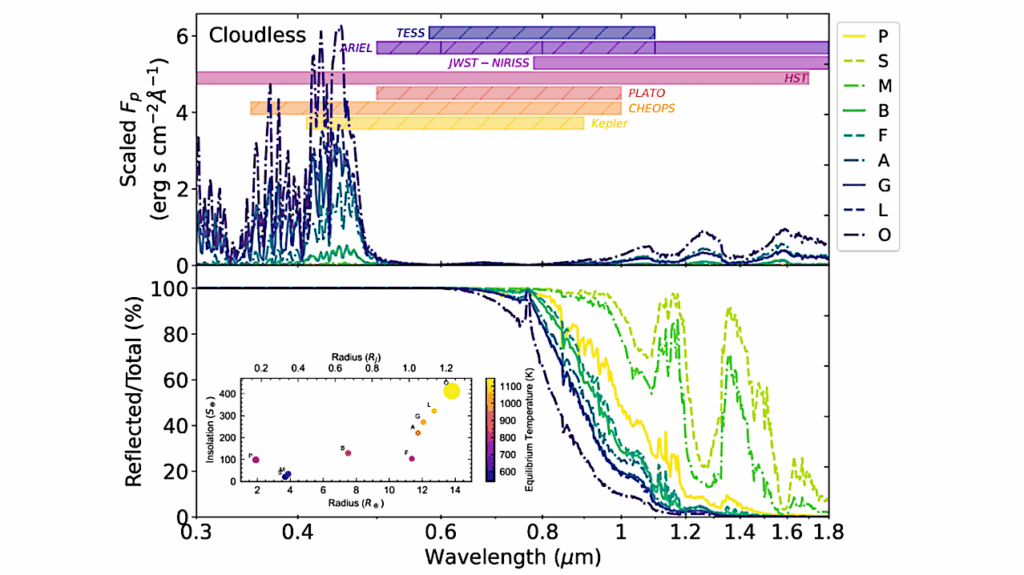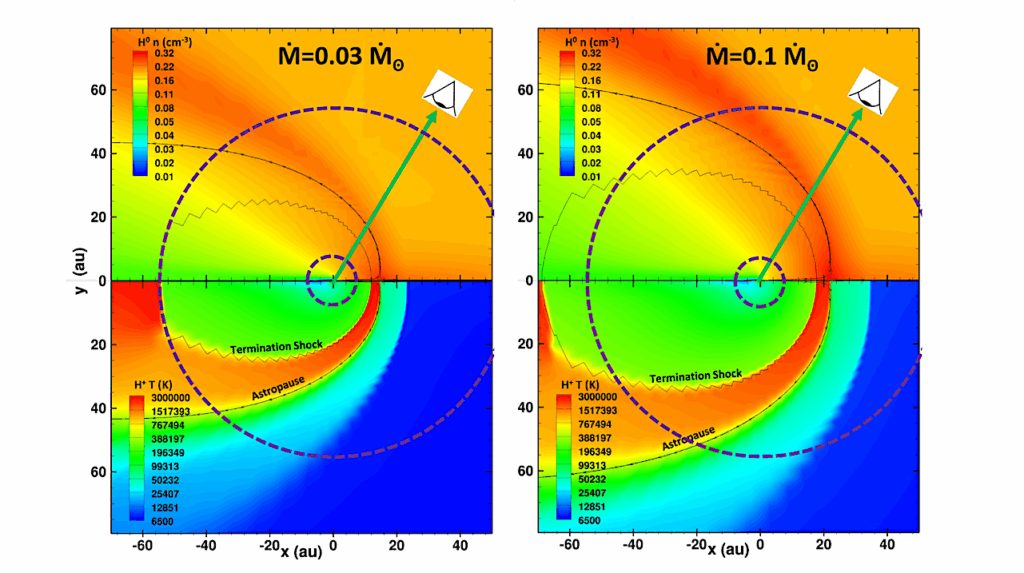Evidence For The Volatile-rich Composition Of O 1.5-R⊕ Planet

The population of planets smaller than approximately 1.7 R⊕ is widely interpreted as consisting of rocky worlds, generally referred to as super-Earths.
This picture is largely corroborated by radial-velocity (RV) mass measurements for close-in super-Earths but lacks constraints at lower insolations. Here we present the results of a detailed study of the Kepler-138 system using 13 Hubble and Spitzer transit observations of the warm-temperate 1.51±0.04 R⊕ planet Kepler-138 d (Teq,AB=0.3~350 K) combined with new Keck/HIRES RV measurements of its host star. We find evidence for a volatile-rich “water world” nature of Kepler-138 d, with a large fraction of its mass contained in a thick volatile layer.
This finding is independently supported by transit timing variations, RV observations (Md=2.1+0.6−0.7 M⊕), as well as the flat optical/IR transmission spectrum. Quantitatively, we infer a composition of 11+3−4\% volatiles by mass or ~51% by volume, with a 2000 km deep water mantle and atmosphere on top of a core with an Earth-like silicates/iron ratio. Any hypothetical hydrogen layer consistent with the observations (<0.003 M⊕) would have swiftly been lost on a ~10 Myr timescale.
The bulk composition of Kepler-138 d therefore resembles those of the icy moons rather than the terrestrial planets in the solar system. We conclude that not all super-Earth-sized planets are rocky worlds, but that volatile-rich water worlds exist in an overlapping size regime, especially at lower insolations.
Finally, our photodynamical analysis also reveals that Kepler-138 c (Rc=1.51±0.04 R⊕, Mc=2.3+0.6−0.5 M⊕) is a slightly warmer twin of Kepler-138 d, i.e., another water world in the same system, and we infer the presence of Kepler-138 e, a likely non-transiting planet at the inner edge of the habitable zone.
Caroline Piaulet, Björn Benneke, Jose M. Almenara, Diana Dragomir, Heather A. Knutson, Daniel Thorngren, Merrin S. Peterson, Ian J. M. Crossfield, Eliza M.-R. Kempton, Daria Kubyshkina, Andrew W. Howard, Ruth Angus, Howard Isaacson, Lauren M. Weiss, Charles A. Beichman, Jonathan J. Fortney, Luca Fossati, Helmut Lammer, P. R. McCullough, Caroline V. Morley, Ian Wong
Comments: Published in Nature Astronomy. 4 main figures, 10 extended data figures, 13 supplementary figures. 4 tables
Subjects: Earth and Planetary Astrophysics (astro-ph.EP)
Cite as: arXiv:2212.08477 [astro-ph.EP] (or arXiv:2212.08477v1 [astro-ph.EP] for this version)
Related DOI:
https://doi.org/10.1038/s41550-022-01835-4
Focus to learn more
Submission history
From: Caroline Piaulet
[v1] Wed, 14 Dec 2022 19:06:10 UTC (31,188 KB)
https://arxiv.org/abs/2212.08477
Astrobiology








